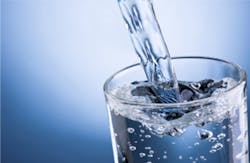The U.S. Environmental Protection Agency (EPA) announced it will provide more than $8 million to create two national centers for research and innovation in small- to medium-sized drinking water systems in an effort to improve America’s drinking water.
“These centers will help to develop innovative and practical solutions for challenges faced by smaller drinking water systems, which make up the majority of public water systems in the United States,” said Lek Kadeli, acting assistant administrator for EPA’s Office of Research and Development. “Providing cost-effective solutions to help these systems deliver safe, high-quality drinking water will help improve the health, economy and security of our nation’s communities.”
The grant recipients of the $8 million are the University of Colorado Boulder’s Design of Risk Reducing, Innovative Implementable Small System Knowledge (DeRISK) Center, and the University of Massachusetts Amherst’s Water Innovation Network for Sustainable Small Systems (WINSSS) Center. These two EPA-funded centers will develop and test advanced, low-cost methods to reduce, control, and eliminate groups of water contaminants that present challenges to communities worldwide.
READ ALSO: Application Note—City of Akron Modernizes Treatment Plant to Meet EPA Turbidity Regulations
Ninety seven percent of the nation’s roughly 160,000 public water systems serve fewer than 10,000 people each. These drinking water systems face many obstacles including limited resources, aging infrastructure, and complying with a variety of regulations. These centers will help strengthen the technical, managerial, and financial capacities of drinking water providers throughout the country. Both centers will collaborate with a range of stakeholders to support problem-oriented research on groups of water contaminants and their origins. This research marks a move toward developing transdisciplinary results that will be nationally acceptable and applicable, the EPA says.
These grants, part of EPA’s research on safe and sustainable drinking water, support the development of water clusters—networks of businesses, researchers, and others involved in water technology. Colorado and Massachusetts are both home to water cluster organizations. These organizations are leading the way in developing cutting-edge technologies and bringing them to the market, where they can solve water challenges that threaten health and daily activities while promoting technological innovation and economic growth, the EPA says.
For more information on the grant recipients and centers, visit www.epa.gov/ncer/smalldw.
For more information on the water technology innovation cluster, visit www2.epa.gov/clusters-program.


